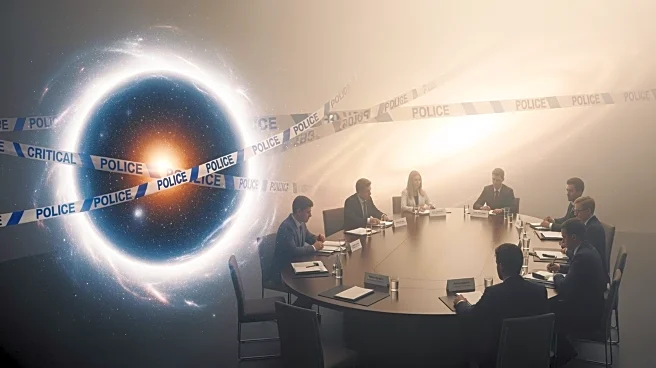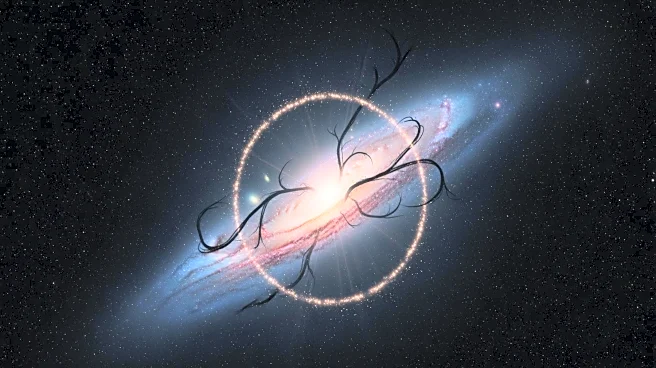What's Happening?
Recent simulations conducted by researchers at the Leibniz Institute for Astrophysics Potsdam and the University of Tartu have revealed that dark matter near the center of the Milky Way is flattened, contrary
to previous assumptions of a spherical shape. This discovery may explain the mysterious excess of gamma rays observed at the galaxy's center, which has puzzled astronomers for over a decade. The study, published in Physical Review Letters, suggests that past mergers and gravitational interactions have distorted the distribution of dark matter, aligning it with the observed gamma-ray signal. This challenges the long-standing theory that dark matter particles colliding and annihilating each other are responsible for the gamma-ray glow.
Why It's Important?
The findings have significant implications for our understanding of dark matter, a substance that constitutes most of the universe's mass but remains largely mysterious due to the lack of direct measurements. By reshaping the assumptions about dark matter's structure, the study opens new avenues for exploring its properties and interactions. If the gamma-ray signal is indeed linked to dark matter, it could provide crucial insights into the nature of this elusive substance, potentially influencing future research and technological advancements in astrophysics.
What's Next?
To further investigate the origin of the gamma-ray signal, astronomers plan to use new telescopes with higher resolution, such as the Square Kilometre Array and the Cherenkov Telescope Array. These instruments could help distinguish between the dark matter and pulsar explanations by providing sharper observations of the galactic center. Additionally, researchers aim to test their theories in other regions, such as nearby dwarf galaxies, to gather more evidence and refine their models.
Beyond the Headlines
The study highlights the importance of questioning established assumptions in scientific research. By challenging the spherical model of dark matter, researchers have demonstrated how revisiting foundational theories can lead to breakthroughs in understanding complex phenomena. This approach may inspire similar reevaluations in other areas of science, fostering innovation and discovery.











